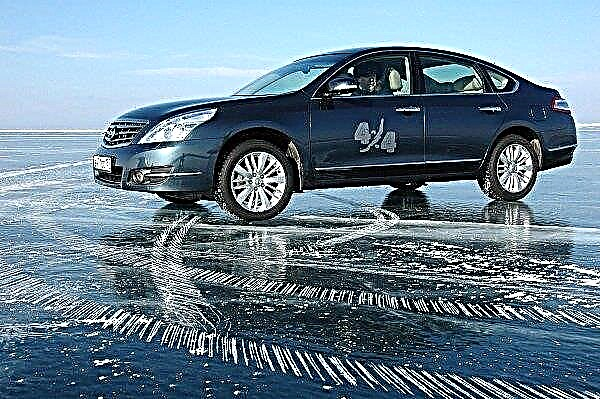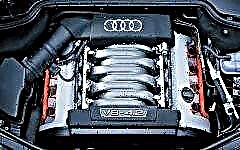

The content of the article:
- Opel Kadett E
- Trabant
- Volkswagen Golf IV
- Mercedes A-class (W168)
- Smart ForTwo
- Mercedes C-class (W202)
- VW New Beetle
- Mercedes C-class Coupe (W203)
- BMW 5 Series GT
- Audi A2
When it comes to the German car industry, a picture of reliable, durable and high-quality cars is instantly drawn in my head, most of which have become real bestsellers not only in Europe, but all over the world.
Recall at least such models as the first generation VW Golf and its "charged" version of the GTI, Mercedes Benz E-class in the back of W123 / 124, BMW M3 (E30), Audi Quattro and VW Beetle, which literally made automotive history.
However, even in such an exemplary country as Germany, it was not without outright "mistakes", among which we chose the TOP-10 of the worst representatives, which we hasten to share with you.
Opel Kadett E

This car debuted on the world stage in 1984 and even managed to get the title of "Car of the Year in Europe" (1985). However, it is one of the most unsuccessful Opel models in its entire history.
The car not only had a mediocre appearance and internal content, but also did not differ in high reliability. In 1987, the automaker sold the license for the production of the model to the Korean auto concern Daewoo, as a result of which its twin brother, Daewoo Racer, appeared on the market.
Some time later, the model formed the basis for the budget Daewoo Nexia sedan, which not only does not have a sufficient level of safety, but is also famous for its "lusciousness".
Trabant

The Trabant model was one of the main symbols of post-war Germany, however, even today the car is quite popular among “antique” lovers and collectors. And if everything is more than good with the perception of the machine, then from the point of view of engineering it was a real failure.
The power plant of the car was designed in such a way that the engine oil topping up was constantly required. In addition, despite the volume of 500-600 "cubes" and the power of 26 hp, the car had an impressive "appetite". The reason for this is the gas tank located directly above the engine, gasoline from which entered the combustion chamber by means of gravity.
The "cherry on the cake" was the body, or rather, its attachments, which were made of the so-called phenolic resin filled with cotton waste.
Volkswagen Golf IV

Despite the overall success of the model, the 4th generation VW Golf has become a real "fly in the ointment" in the camp of the Wolfsburg-based company. The fact is that this car had not only a dull and unremarkable design, but also did not differ in proper reliability, which resulted in a large number of calls to service centers.
Currently, the car is widely represented in the used car market, but the demand for it is negligible, which is explained by mediocre assembly, frankly unsuccessful bodywork and a number of minor flaws that their "happy" owners regularly encounter.
Moreover, the car has mediocre handling, which has become one of the key factors affecting the perception of the model and brand as a whole.
Mercedes A-class (W168)

This small hatchback was one of the first attempts by the company to gain a foothold in the compact car class, which it failed miserably.
Mercedes A-class (W168) received a terrible appearance, mediocre build and a minimum amount of free space in the cabin.
However, the greatest disappointment was the "moose test", during which the car literally fell on its side, which subsequently became the reason for the massive recall of the model from the market.
Mercedes tried to fix the problem by installing a stability control system, but irreparable damage was done to the car's reputation, which resulted in extremely low sales.
Smart ForTwo

This baby made its debut on the world stage in 1998 and held out on the assembly line, having gone through several minor restyles, until 2004.
The company Mercedes, and it is she who owns the Smart brand, spent colossal amounts of money to make the car popular, but it never did. However, this is not surprising, because with its toy dimensions, the car did not differ in the expected efficiency, it had an openly budget-friendly interior in terms of quality and assembly, a complete lack of comfort when moving and just a cosmic cost by the standards of the class.
But in fairness, it is worth noting that two adult riders under 2 m tall could easily fit in the car, plus it provided a high level of safety, which was achieved thanks to a special steel "monocoque".
Mercedes C-class (W202)

As successful and reliable the Mercedes C-Class W201 was, so unsuccessful was its predecessor in the back of the W202. Among the main complaints are:
- Cramped and not ergonomic interior;
- Low reliability of technical stuffing, including electronics and fashionable "chips";
- A frankly failed body, on which, even with proper care, rust quickly appeared.
All this played a bad joke with the model and negatively affected the perception of subsequent C-class models. Only with the advent of the 2000s, the company was able to cross out the unsuccessful experience of the model and return its proper perception in the face of potential buyers, which, as you know, are wealthy people who can count money.
VW New Beetle

The first VW Beetle, despite its utility, has become a real legend, which is once again confirmed by the 65 years that the car was able to hold out on the assembly line.
In 1998, VW made an attempt to revive the former legend by releasing a modern version of the Beetle, which received the prefix "New" to the name. As conceived by the manufacturer, the novelty was supposed to appeal to both female and male representatives, but ultimately the model gained fame as a “female car”.
In 2010, the VW New Beetle was discontinued because it did not live up to expectations.
Mercedes C-class Coupe (W203)

After the outright failure of the model with the W202 index, Mercedes management tried with all its might to fix its damaged reputation. The company even tried its hand at creating a budget hatchback with a coupe body, which became the Mercedes C-Class Coupe (W203).
But the expectations of the brand's management did not come true, which was facilitated by the controversial design of the model, the high cost and relatively low build quality, which was simply not expected from the company.
Nevertheless, the model managed to correct a number of shortcomings of the previous generation car, namely, problems with the body, electronics and suspension.
BMW 5 Series GT

In 2009 in Geneva, BMW unveiled the new 5 Series GT model, which despite expectations has become one of the company's worst creations in a decade.
The fact is that while creating the car body, even inside the auto concern, they could not tell who the target audience of this "under-crossover" is and why it is generally needed. Throw in the mediocre reliability and you have an answer to the question of why sales of the model have not skyrocketed.
But even despite the outright failure, the Bavarians are in no hurry to remove the car from the assembly line, probably hoping that potential buyers simply did not try out the new form factor.
In the meantime, the company is waiting for the success of the BMW 5 Series GT on the world stage, potential buyers prefer to vote with a ruble for more stylish, presentable and bright cars.
Audi A2

In 2002, Audi presented to the world public a model of the subcompact van Audi A2, in the development of which was invested simply astronomical money at that time.
The car was conceived as an economical and environmentally friendly vehicle, and it really succeeded in many ways in these areas, but the rest of the components frankly let us down.
First of all, the car received a design that raises many questions, which by no means was associated with presentable and stylish neighbors in the lineup. And secondly, the car not only did not have the expected level of reliability, but also had low maintainability, especially with regard to the innovative aluminum body.
And, thirdly, the price, which was an order of magnitude higher than that of most competitors.
Conclusion
In recent years, the Germans have begun to take a more balanced approach to the creation of new models, since the cost of a mistake in the conditions of the Japanese and Koreans stepping on the heels can cause irreparable damage to the perception and financial performance of the company.











